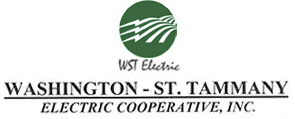Generator Safety
The following information was developed by the American Red Cross with technical advice from the Centers for Disease Control and Prevention, the National Fire Protection Association (publisher of the National Electric Code®) and the U. S. Consumer Product Safety Commission and can be found on the American Red Cross website.
How to Choose a Generator
What size generator will I need?
- Add up the power requirements of the appliances and devices you will want to use. (Check the back and sides for a label with this info.)
- Add up the wattage of all the light bulbs you will want to use.
- Find the total amps you need by dividing watts by volts.
- Choose a generator that produces more amps than you need – because some machines draw up to 3 times as much power when starting up, and others lose efficiency over time. The best option is a permanently-installed stationary generator.
Ask a Professional
- If your power needs are complicated or difficult to determine, consider asking an electrician to assist you.
- If you want to permanently connect your generator to your home’s house wiring, have an electrician install a power transfer switch in accordance with the National Electrical Code® (NEC), which is published by the National Fire Protection Association, as well as all applicable state and local electrical codes.
Using a Generator at Home
The primary hazards to avoid when using a generator are carbon monoxide (CO) poisoning from the toxic engine exhaust, electric shock or electrocution, and fire. Follow the directions supplied with the generator.
- To avoid electrocution, keep the generator dry and do not use in rain or wet conditions. Operate it on a dry surface under an open canopy-like structure, such as under a tarp held up on poles. Do not touch the generator with wet hands.
- Be sure to turn the generator off and let it cool down before refueling. Gasoline spilled on hot engine parts could ignite.
- Store fuel for the generator in an approved safety can. Use the type of fuel recommended in the instructions or on the label on the generator.
Local laws may restrict the amount of fuel you may store, or the storage location. Ask your local fire department.
Store the fuel outside of living areas in a locked shed or other protected area. To guard against accidental fire, do not store it near a fuel-burning appliance, such as a natural gas water heater in a garage.
- Plug appliances directly into the generator, or use a heavy duty, outdoor-rated extension cord that is rated (in watts or amps) at least equal to the sum of the connected appliance loads.
Check that the entire cord is free of cuts or tears and that the plug has all three prongs, especially a grounding pin.
- Never try to power the house wiring by plugging the generator into a wall outlet. Known as “backfeeding,” this practice puts utility workers, your neighbors and your household at risk of electrocution.
- Remember, even a properly connected portable generator can become overloaded, resulting in overheating or generator failure. Be sure to read the instructions.
- If necessary, stagger the operating times for various equipment to prevent overloads.
How to Prevent Carbon Monoxide (CO) Poisoning When Using a Generator
- Never use a generator, grill, camp stove or other gasoline, propane, natural gas or charcoal-burning devices inside a home, garage, basement, crawlspace or any partially enclosed area.
- Keep these devices outdoors, away from doors, windows and vents that could allow carbon monoxide to come indoors.
- Opening doors and windows or using fans will not prevent CO buildup in the home. Although CO can't be seen or smelled, it can rapidly lead to full incapacitation and death. Even if you cannot smell exhaust fumes, you may still be exposed to CO. If you start to feel sick, dizzy, or weak while using a generator, get to fresh air RIGHT AWAY - DO NOT DELAY.
- Install CO alarms in central locations on every level of your home and outside sleeping areas to provide early warning of accumulating carbon monoxide.
Test the batteries frequently and replace when needed.
- If the carbon monoxide alarm sounds, move quickly to a fresh air location outdoors or by an open window or door.
Call for help from the fresh air location and remain there until emergency personnel arrive to assist you.



